Sharing a lifetime of sailboat savvy, much of it in scows, Minnesota boat builder Willie Crear answered questions and challenged assumptions during the third annual Scow Camp in the Potomac.
With winds howling at 30 plus, about 12 scow sailors huddled with Willie for a white board discussion in the Charleston Room at the Washington Sailing Marina. That was followed by a boat-by-boat review of the vintage Inland 20 fleet.
Willie is well known in scow circles, having raced and owned the alphabet soup of scows from A to the I20. He is one of the old timers who has dedicated countless hours paying it forward.
During his indoor session, he spent a fair amount of time on the feature that makes Scows unique: bilgeboards. Rule 1: the front edge needs to be straight down. Bring it up for running (the horn should be four inches from the vertical position) and beam reaches. Rule 2: make sure the board is not bent. One meatball standing on the board can put a bend on the quarter-inch aluminum plate. Rule 3: Don’t slam the boards in the box when raising them. It may feel like you’re being smart, but the force is like a sledgehammer, says Willie. If you really want to protect the box, press some garden hose on the rear and top of the slot to cushion the impact. Tip: spread some epoxy paste on the joint where the upper deck and board box meet. This creates a ramp so the board horn does not wedge on the upswing.
Outside, Willie started measuring spars. First, he drew a line where the top of the deck intersects the spar. From there, he measured up 18 inches to get the edge of the black band at the foot boltrope of the main. This 18 inches is about 6 more inches of clearance than the A scows, according to Willie. Cause for celebration. Next were measurements to the top of the main hoist. And there was the all-important rake: 28-feet-4-inches from the head of the main to the top center of the transom.
There were lots more tips: tying halyards away from the mast (“Take off that mast ring!) etc. etc.
Willie was incredibly generous with his time and almost everyone let him know. We are encouraging members to write their recollections below, so we can preserve some of the detail.
Special thanks go to Rob Gosselink for his amazing Chili and gracious hospitality on Friday night. The Indigo Landing Restaurant was kind enough to donate the Charleston Room for our chalk talk. And fianlly…Tim Dickson offered up his “fam cave” on Saturday evening with very cool shuffleboard and pool tables. Shuffleboard…addictive! I’m told Carrie and Ian shut Tim’s place down watching scow videos on YouTube. But the most amazing high five goes to Albie Dickson, who managed to host a bunch of sailors on top of a homecoming party for son Mac. Nice!

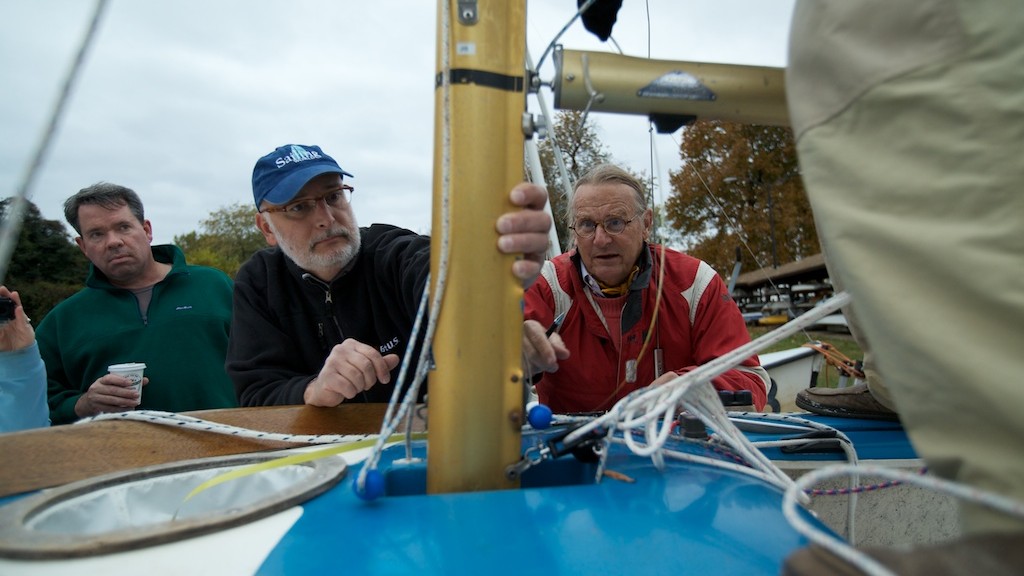
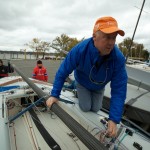
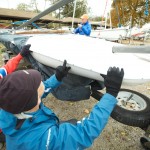


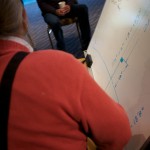

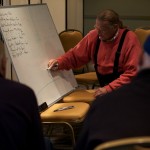
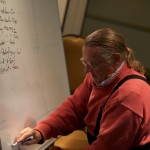

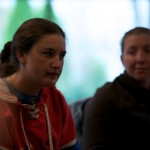
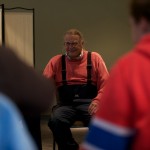

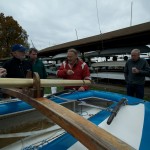
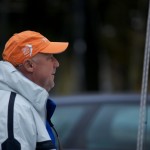
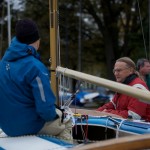
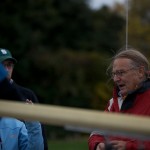
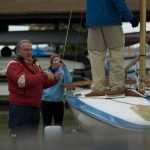

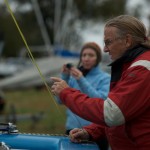
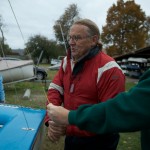
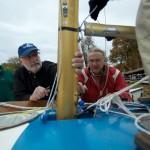
Super advice on sailing technique, racing strategy, and boatmanship skills. But even more fun were all the stories: some nurturing, others scary, still others inspirational, but all excellent performance art.
Willie sure knows these boats, and it was interesting to hear sailing techniques and about adjustments to the rigging. It may have been blowing 30 kts, with temperatures below what any sane person would be sailing in, but I think Willie wanted to take a little trip up the Potomac.
The first thing that Willie did to all of our boats was measure mast rake. Mine came in at 28? 2? measured from the top black mast band down to the edge of the transom. Supposed to be 28? 4? so the mast is raked a little too far aft. I think that will change with the new jib and some tweaks to the chainplate adjusters.The second thing Willie did was check the height of the mast bands on all of our boats. Mine was off by about an inch or two. (Remember, 18? off the deck for the lower band). Fortunately, Willie came loaded with black and white mast tape. We replaced mine and Rob’s (Avocado) on the fly. I think Tim may have had to move his, too; he has one of those fancy bendy carbon sticks that all of the rest of us can only dream about. We’re all driving Chevy’s while Tim’s driving the Porsche.